Your Cart is Empty
Get Up To 35% OFF & Free Delivery
Get Up To 35% OFF & Free Delivery
Get Up To 35% OFF & Free Delivery

Walks are a super important part of a dog’s daily routine; it boosts physical and mental wellbeing, keeps them stimulated and promotes healthy socialization and interaction with their environment.
Keeping your dog on a leash during walks is vital for their safety whilst out and about in the world. It helps to keep them out of dangerous areas, allows you to recall them during difficult situations, and enables them to explore the outdoors and socialize in a safe and controlled way.
We are going to dive into the world of leash training, giving you some of the most effective tips and tricks on how to train a dog to walk on a leash and keep them safe whilst out and about.
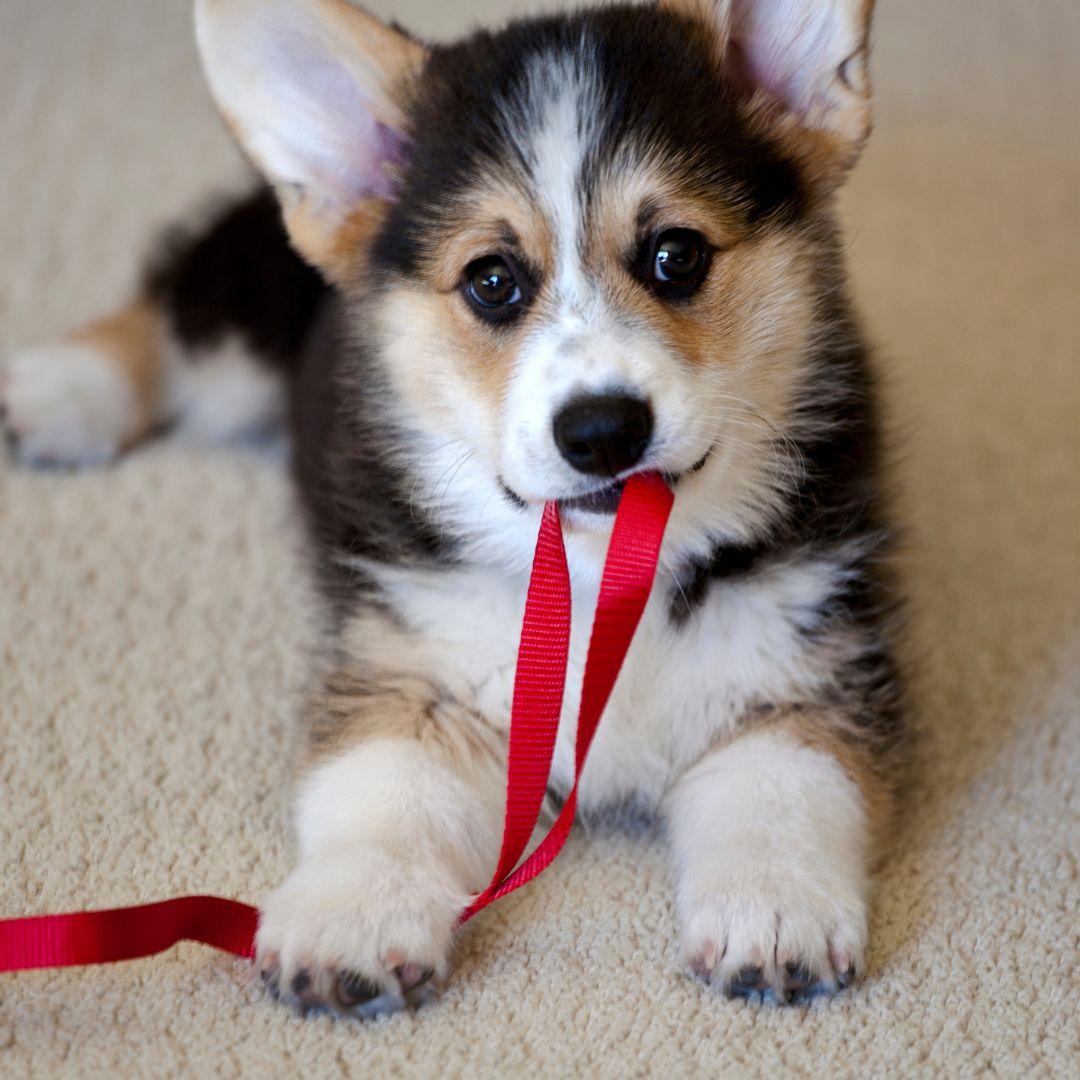
It is recommended that you start leash training your dog from puppyhood, so as soon as your pup is ready to come home you can start introducing them to the idea of walking with a leash.
Everything is new to puppies, and so their learning is constant, however they do have particularly short attention spans. Sessions will need to be kept short and include regular breaks, usually every 10-15 minutes. It is vital that your puppy has received all their vaccinations before you take them walking out in the big wide world.
It tends to take younger dogs about 4-6 weeks to fully get to grips with leash walking, however this will vary depending on each dog. Older dogs may struggle more with the learning process as they already have a strong behavioral foundation, but with gentle encouragement and regular practice nothing is impossible!
Teaching your dog to walk on a leash is simple in theory, however there are some important things to remember to ensure that the training process is as comfortable and enjoyable as possible for both your pup and you.
We have put together a short guide with some of the foundational steps for how to leash train a dog safely and effectively:
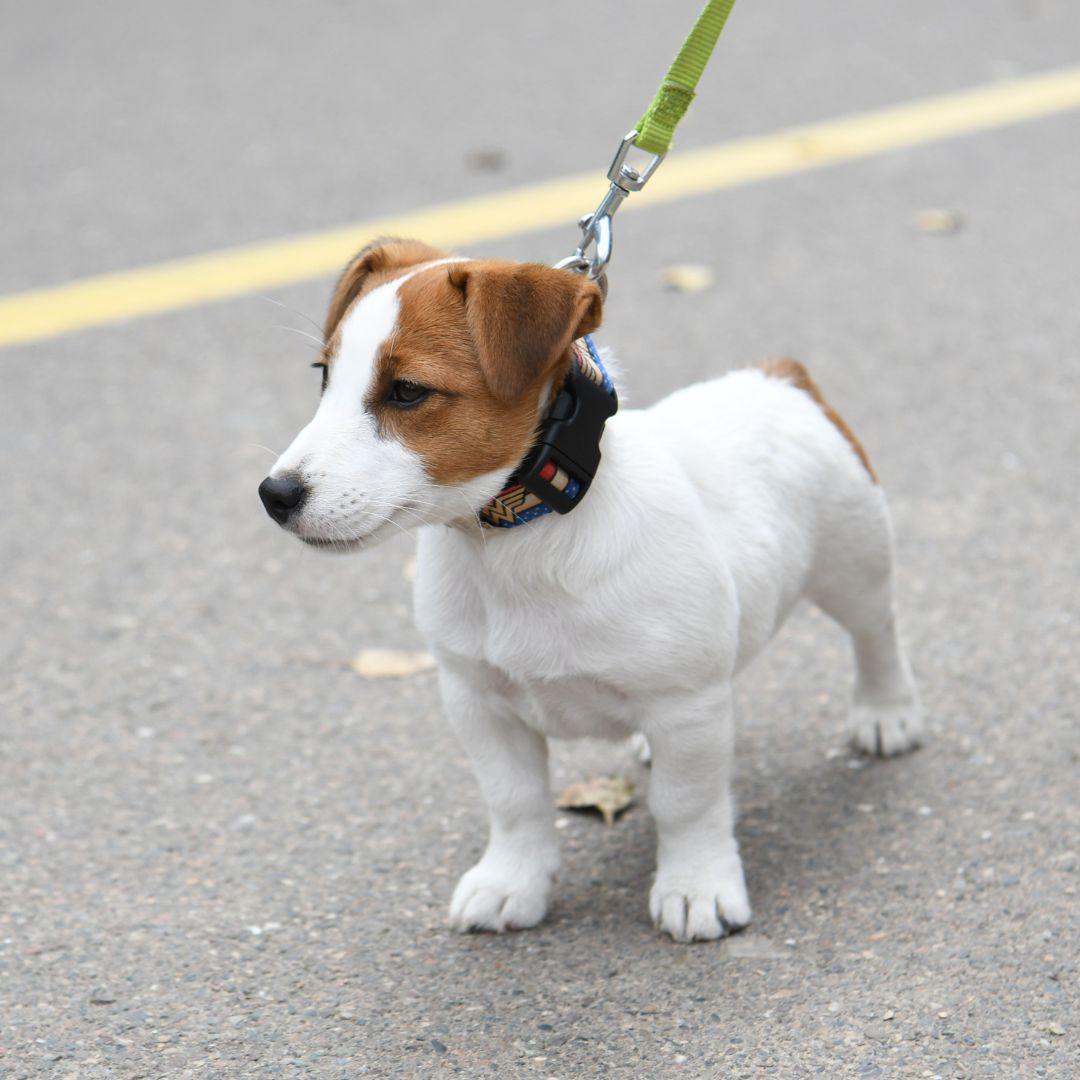
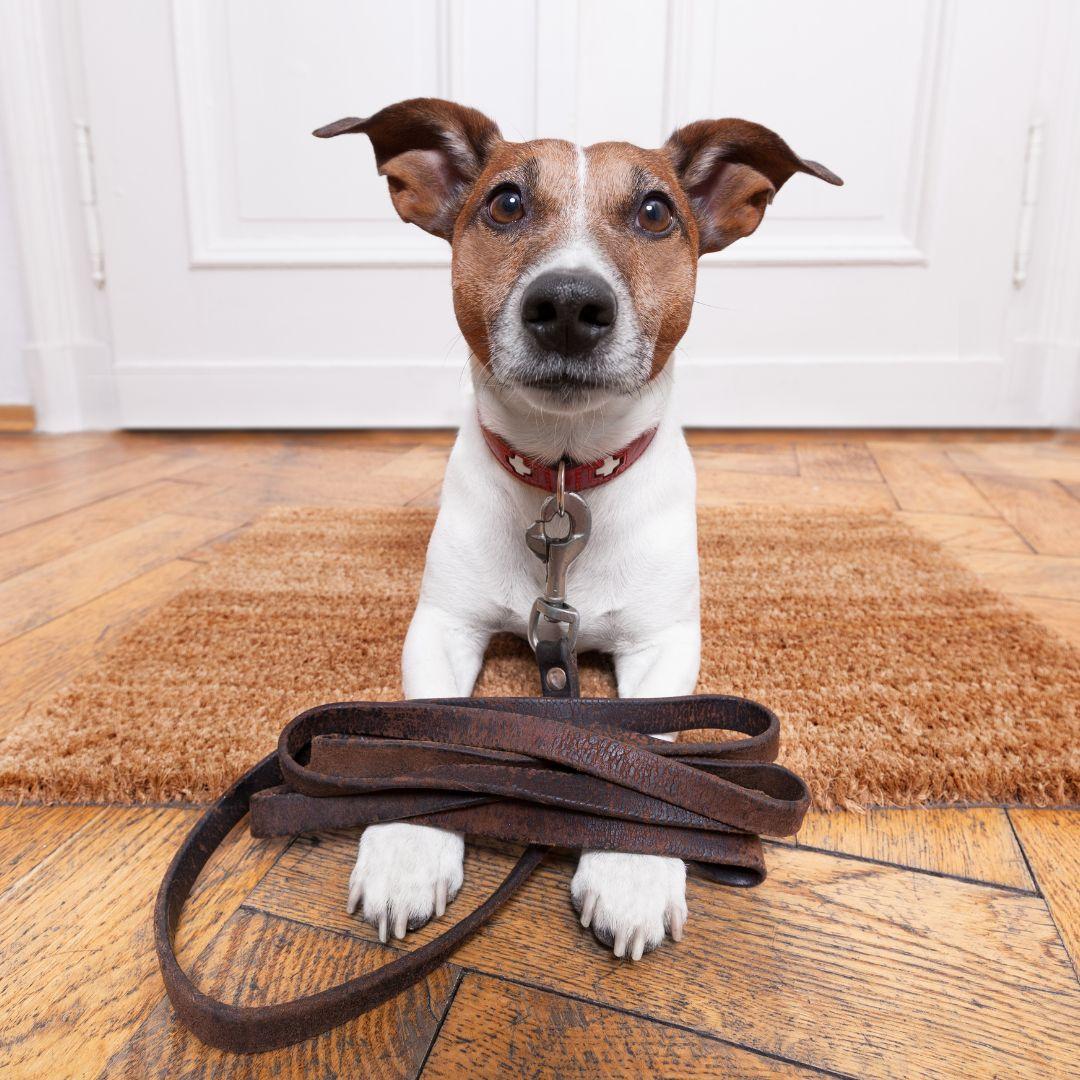
Collars and leashes will be unfamiliar to your dog, and therefore may be confronting. Allow your dog to see and sniff their collar and leash - it is advised to use non-retractable leashes during training - getting them used to this new equipment. You may want to allow your puppy to wear their collar around the house for a few minutes at a time before starting training to get them accustomed to the feeling of something around their neck.
Once your dog seems more comfortable with their collar and leash, you want to introduce a cue which will make them come to you. This can be done by putting your dog on their leash and choosing a command, such as ‘come’, or perhaps a vocal sound or use of a clicker, to encourage them to come to you. Once they complete this action, give them a treat as positive reinforcement.
Start by training your dog inside, as this will get them used to the sensation of walking around on the leash in a familiar environment, helping to keep them calm and to make the learning process as non stressful as possible.
A few times a day you can take your dog for a walk around the house on their leash, allowing them to move and sniff around freely, whilst also practicing the recall command you implemented previously.
Heel is an essential command to keep your dog steady whilst walking and to avoid them pulling on their leash. When dogs see or smell something exciting they will naturally want to pull forward and explore, so regularly practicing the ‘heel’ command - you can say ‘heel’ or choose your own fitting cue - will allow you to regulate your dog’s pace and reach.
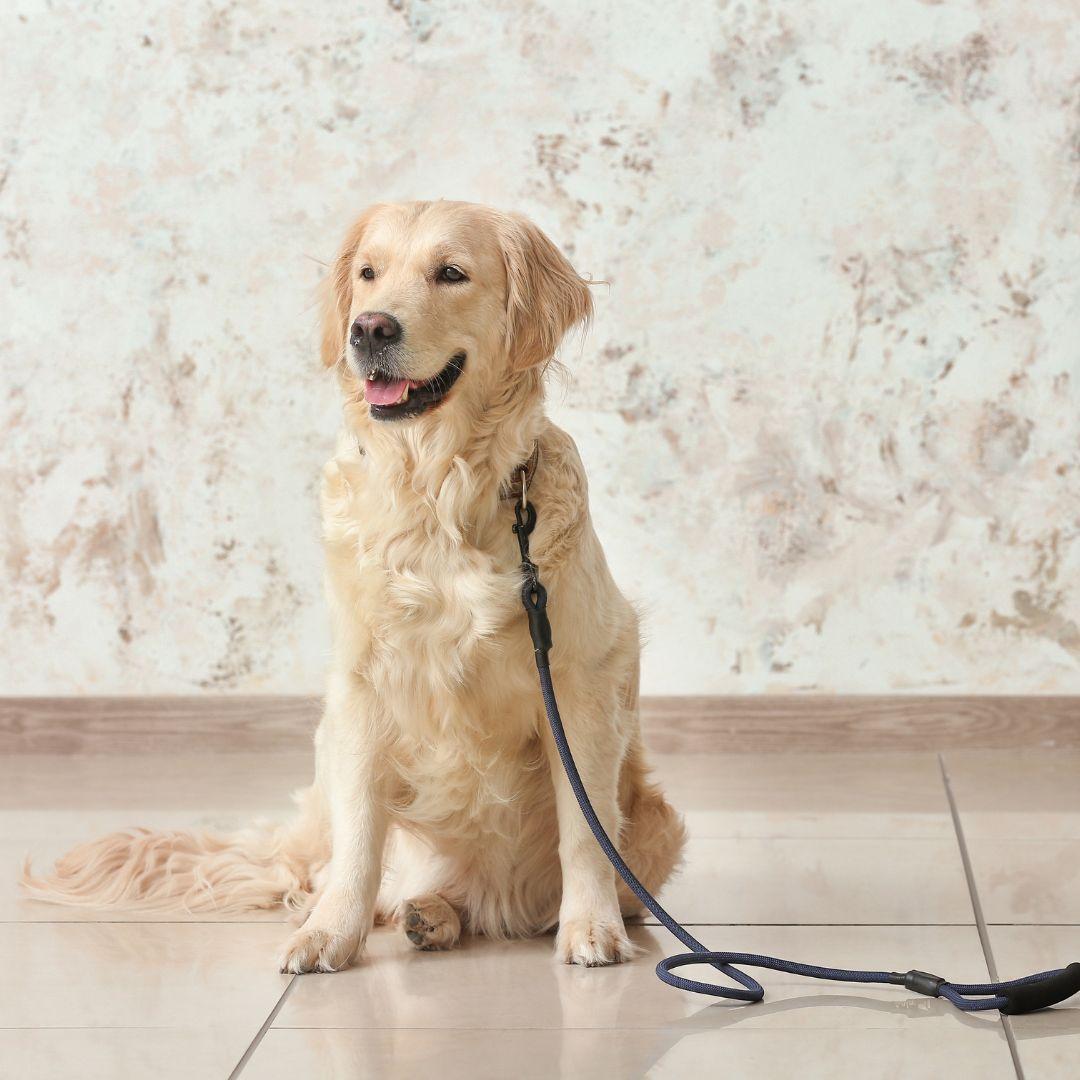

Once your dog seems comfortable and ready to move onto outdoor walking, you can try taking them out into the garden or to a smaller, quieter park or grassy area to give them a feel for it. The outdoors comes with greater risks, temptations and distractions for your dog, and so solidifying what they have learnt in a more secluded outside area will prepare them for further adventures.
The more confident and well-behaved your dog becomes, you can start taking them into larger or more crowded areas to help socialize them and get them used to proper big pup walkies!
Keeping your dog safe and comfortable whilst out walking on a leash should be top priority - here are a few of the things that can go awry with leash training and how to manage them:
Before taking your dog out into the world, it is essential that they have had the appropriate vaccinations, have been microchipped and are wearing up-to-date ID tags on their collar. This helps prevent illness and allows for easy identification should they get lost.
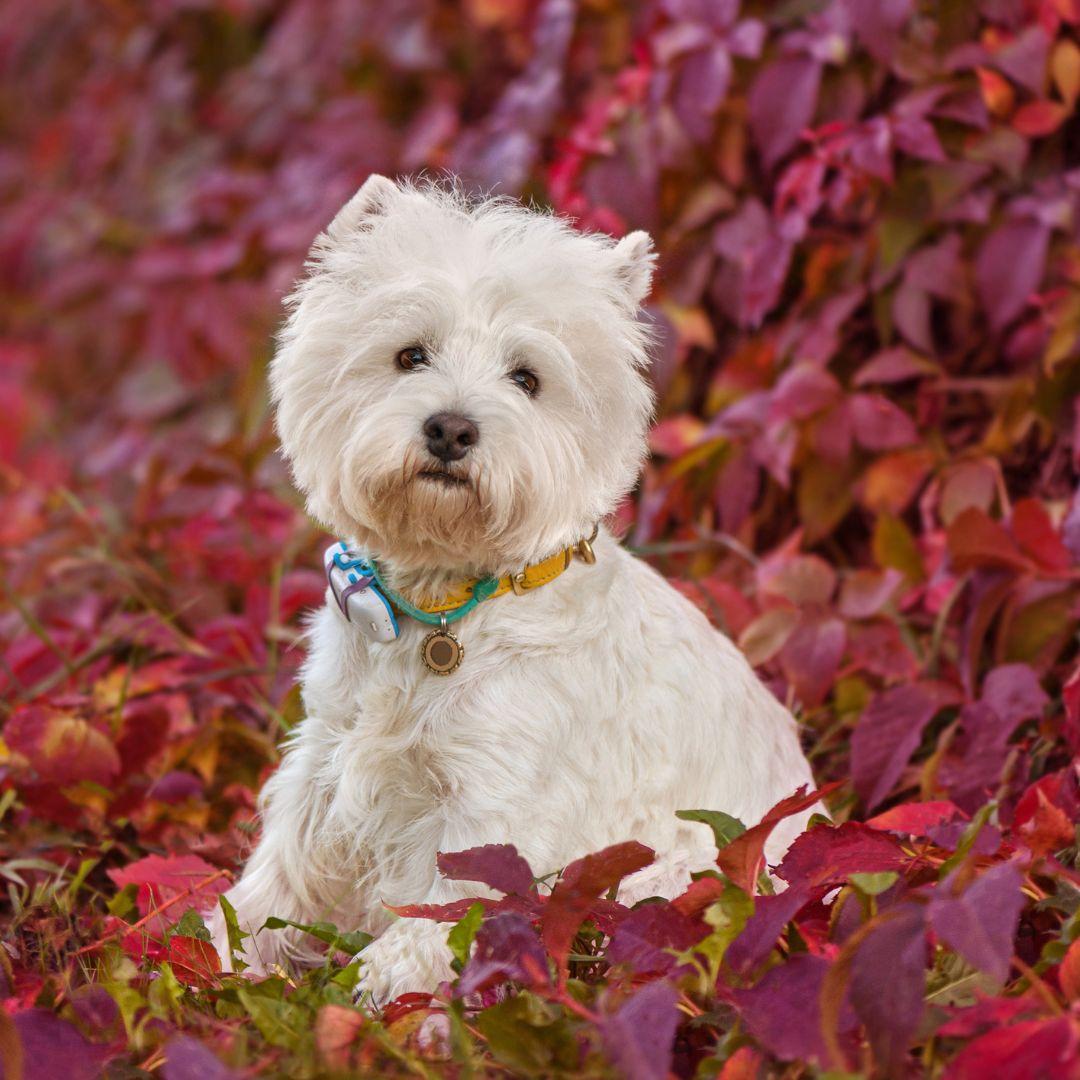

Pulling can put strain on the dog’s collar and hurt their neck, and while your instinct may be to pull them back, this can only worsen the issue. It is advised that you make yourself in a ‘tree’, meaning you should stand completely still and wait until your dog decides that pulling is actually uncomfortable and they will not be getting their way. For a more detailed guide on addressing this behavior, check out our article, How to Train Your Dog to Stop Pulling on a Leash.
Prevention is one of the best ways to deal with lunging. Stay aware of your surroundings and be proactive about creating distraction from the temptation. Offer them a treat to lure them back, and try to keep as much distance between you and the target as possible to avoid your dog getting too riled.
Barking can often be a sign of a lack of mental or physical stimulation, and with regular walking and playtime this shouldn’t be too much of an issue. However if you find your dog is barking whilst out on walks, keeping them away from potential triggers, as well as recalling them and distracting them with treats are often very effective.
Particularly when working with puppies or younger dogs, it is important to keep training sessions short and engaging and to implement regular breaks; this helps to maintain their interest and stops them getting distracted.
In any training routine, the focus should always be on positive reinforcement and repetition. This is how dogs learn, and if they feel like they are doing a good job and pleasing you, they will thrive.
The worst thing you can do when training your dog in anything is to punish them. Shouting at your dog or using physical punishment is not only abusive, it is extremely ineffective and will only frighten and confuse them.
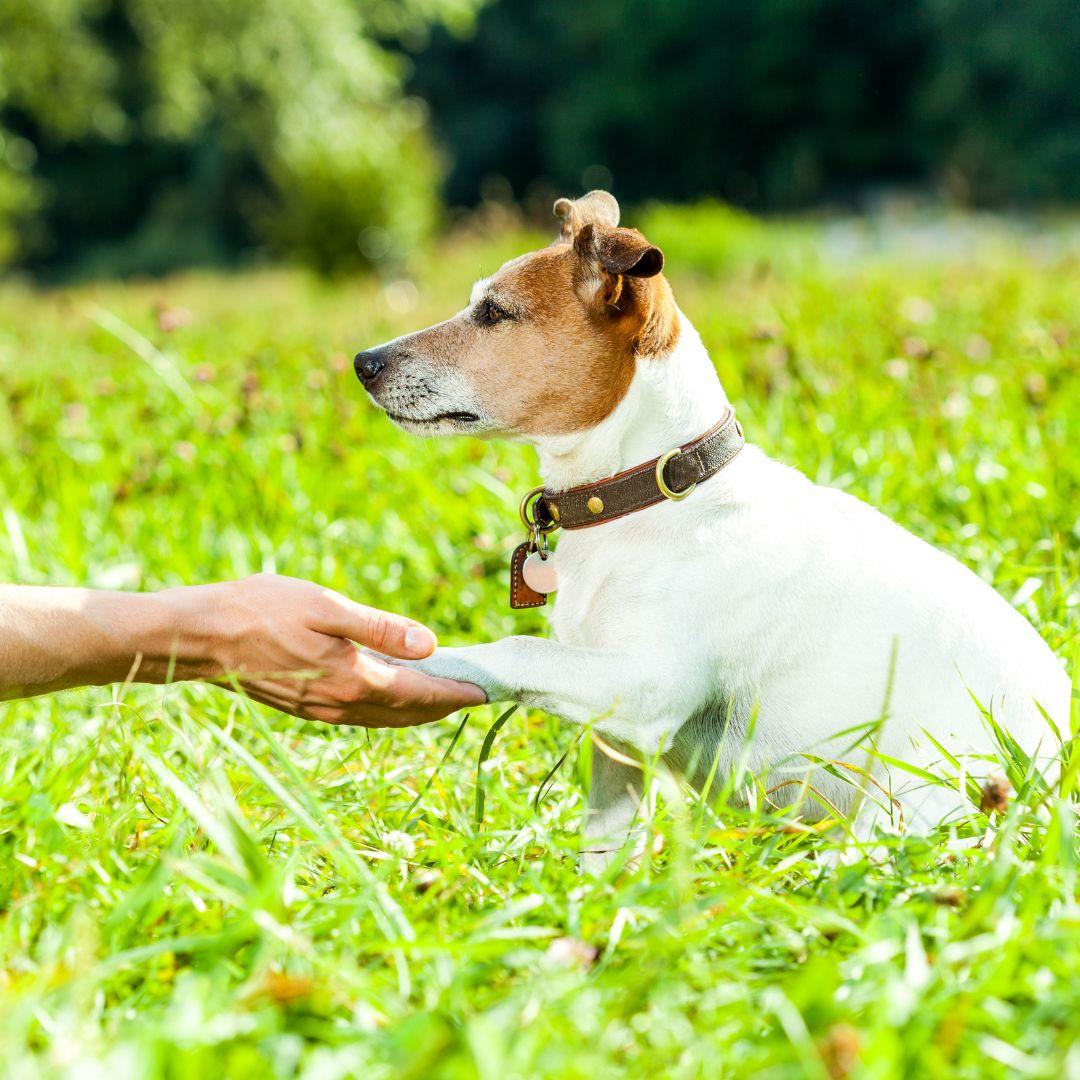
If done effectively, leash training is an excellent way to keep your dog safe and secure whilst out and about. If you are able to, starting your dog’s training from young while they are most receptive will be beneficial in the long term, encouraging good behaviors from day one.
Leash training requires specific stages in order to get your dog ready to explore the big wide world, and so starting them off slowly, practicing in a comfortable indoor environment, and gradually introducing them to larger areas and more sociable situations will help them grow into a confident and active walking companion.
See How Dog Owners Are Using These Leak-Free Potty Pads to Keep Their Homes Clean and Pups Happy
4.7 ⭐⭐⭐⭐⭐
Over 100,000 Dog Owners Saved Money With Potty Buddy™
The washable pee pads that absorb anything your dog throws at them, while keeping your floors and furniture stain-free.
✅ Super Absorbent and Leak-Proof
✅ Great for Potty Training
✅ Ideal for Puppies and Older Dogs
✅ Washable and Reusable For Years
✅ Save over $400/year by not buying disposables
-60 Day Money Back Guarantee-

⭐⭐⭐⭐⭐
-Diana D.
These pads are a life saver for my kitchen floor and bedroom carpet! Just ordered 2 more!




Check Out Our Most Popular Content